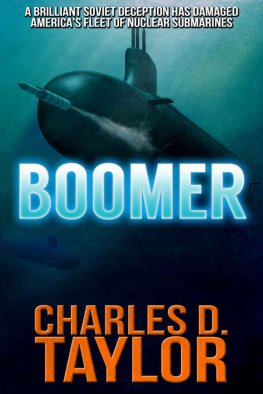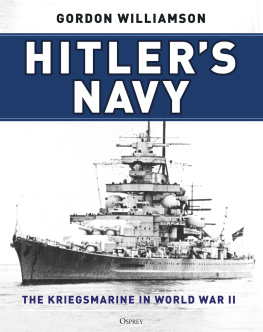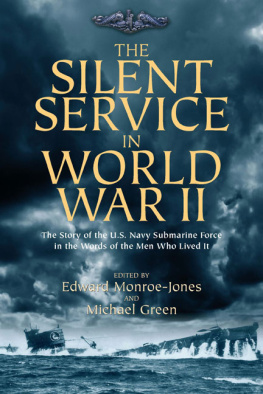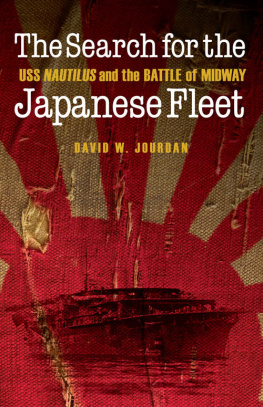SPLINTER FLEET
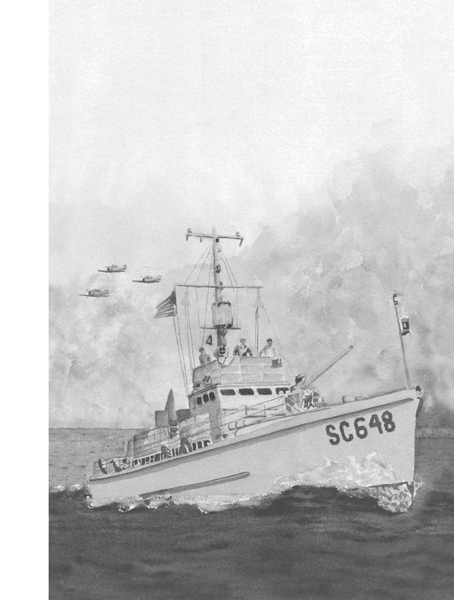

The latest edition of this work has been brought to publication with the generous assistance of Marguerite and Gerry Lenfest.
For more information on the wooden subchasers in World War II, visit Splinterfleet.org.
Naval Institute Press
291 Wood Road
Annapolis, MD 21402
2000 by Theodore R. Treadwell
All rights reserved. No part of this book may be reproduced or utilized in any form or by any means, electronic or mechanical, including photocopying and recording, or by any information storage and retrieval system, without permission in writing from the publisher.
First Naval Institute Press paperback edition published 2013
ISBN 978-1-61251-364-5 (eBook)
The Library of Congress has cataloged the hardcover edition as follows:
Treadwell, Theodore R. 1916
Splinter fleet : the wooden subchasers of World War II / Theodore R. Treadwell.
p. cm.
Includes bibliographical references and index.
1. Submarine chasersHistory. 2. World War, 1939-1945Naval operationsSubmarine. 3. World War, 1939-194Naval Operations, American. I. Title.
D783.T74 2000
940.5451dc21
00-029211

 Print editions meet the requirements of ANSI/NISO z39.48-1992 (Permanence of Paper).
Print editions meet the requirements of ANSI/NISO z39.48-1992 (Permanence of Paper).
9 8 7 6 5 4 3 2 1
Unless otherwise noted, photos are from the authors collection.
Frontispiece: Heading Out by Matt Hirsheimer
To the brave young men who served in the Splinter Fleetand especially to those who did not return.
Though shattered planks neath oceans lie,
Their souls in peace shall never die.
Contents
H aving also, like the author, commanded a subchaser during World War II, I wholeheartedly embrace this book for its enlightenment about a class of American warship that has too long been overlooked. We have all heard much about PT boats, submarines, destroyers, and other ships of that great war, but the exploits of the little SC subchasers have gone largely unnoticed and are all but forgotten. Indeed, so little has been written about these vessels that they are virtually unknown. Few of us know what subchasers looked like, why they existed, and what they actually did.
Splinter Fleet makes up for all that by showing us what kind of ships they were and why they wereas the Patrol Craft Sailors Association reminds ustoo good to be forgotten. Originally intended as a stopgap deterrent against German U-boats, they proved to be highly useful for other wartime missions. Many were used in amphibious operations as landing control and communication vessels. As such, they were the first ones to arrive close inshore, facing enemy mortar fire and air attacks while directing waves of landing craft into the beach. Some were used for highly dangerous shallow-water minesweeping prior to the landing. Others were converted into gunboats, steaming up hostile rivers behind enemy lines to provide counter support to ground troops in Pacific jungle warfare. In all of these activities they were exposed, vulnerable, and expendable.
When not thus engaged, subchasers continually were called upon to escort, patrol, and search the seas for submarines, derelict mines, enemy barges, and other suspicious and dangerous objects. Much of their duty consisted of dull, dreary voyages at three-knot speeds, plodding in the wake of the bigger ships as they escorted floating dry docks, supply barges, and other service vessels. Often on the fringe of the big, spectacular battles, they fought their mini-battles, not only against the enemy but against nature. They sailed in the most violent weather under the most uncomfortable kind of living conditions.
Most of the young men who manned the subchasers were landlubbers, unaccustomed to the ways of the navy and the sea, but they soon showed how quickly they could learn and how well they could fight. With typical American aplomb and humor they sailed into harms way, accepting the bad with the good, enduring their discomforts and casualties with a minimum of complaints. Some paid the highest price and were never to return. Their skirmishes with the enemy were fought in the shadows of the major, highly publicized battles and received little or no attention from newsmen. Yet the accomplishments of the intrepid men of the Donald Duck Navy reflect the highest traditions of courage and valor.
This book tells some true stories of how the little ships and their men fought kamikazes, torpedo bombers, midget submarines, coastal barges, and other enemy vessels. It shows how they coped with typhoons, icing, groundings, fire, collisions, rogue whales, and other hazards of the deep. Fortunately there was a mixture of fun and laughter too, which helped offset the dangers and discomforts.
Today, those who served on the wooden subchasers look back on those years with tremendous pride and a sense of accomplishment. They shared a kind of disciplined informality and camaraderie not found elsewhere in the navy. I can personally attest to this, and there is absolutely no doubt in my mind that my experience as a subchaser sailor helped mold and strengthen my character. In addition it was a tremendous learning experience. I learned how to get over seasickness. How? By hating it so much I quit being seasick. I also learned how to play winning poker. Finally, although I was very young, I learned how to appear older than I was by smoking cigars.
Unrecognized and unheralded, the little subchasers deserve better. Here is a well researched, enduring testimony of their accomplishments that is not only welcome but long overdue.
Pierre Salinger
T his book was originally meant to be a personal journal of my life in the South Pacific aboard a World War II subchaser, the sole intention being to entertain my grandchildren, using as reference some letters and pictures sent home and saved by my family that had been gathering dust in the attic for over fifty years. In the process of recollection, however, I began to realize that, although I had served two years on a subchaser, I really knew very little about them and their place in naval history. Along with this, I discovered that the role of the subchaser was so vague and ill-defined that it needed to be explained.
The word subchaser, so common during the war years, has been virtually forgotten. As a topic it cannot be found in any encyclopedia. A search of the Web is not very helpful except for the most ardent researchers. And recently, a navy veteran of the Vietnam War confessed to me that he had never heard of a subchaser. He isnt alone. Hardly anyone born after 1945 has heard of subchasers or knows anything about themwhat they were, and what they were supposed to do. Yet during the war years they were a household word, particularly during the Battle of the Atlantic, when they took the brunt of the U-boat war.
Next page

